XML Preliminaries
Brief History of Explainability
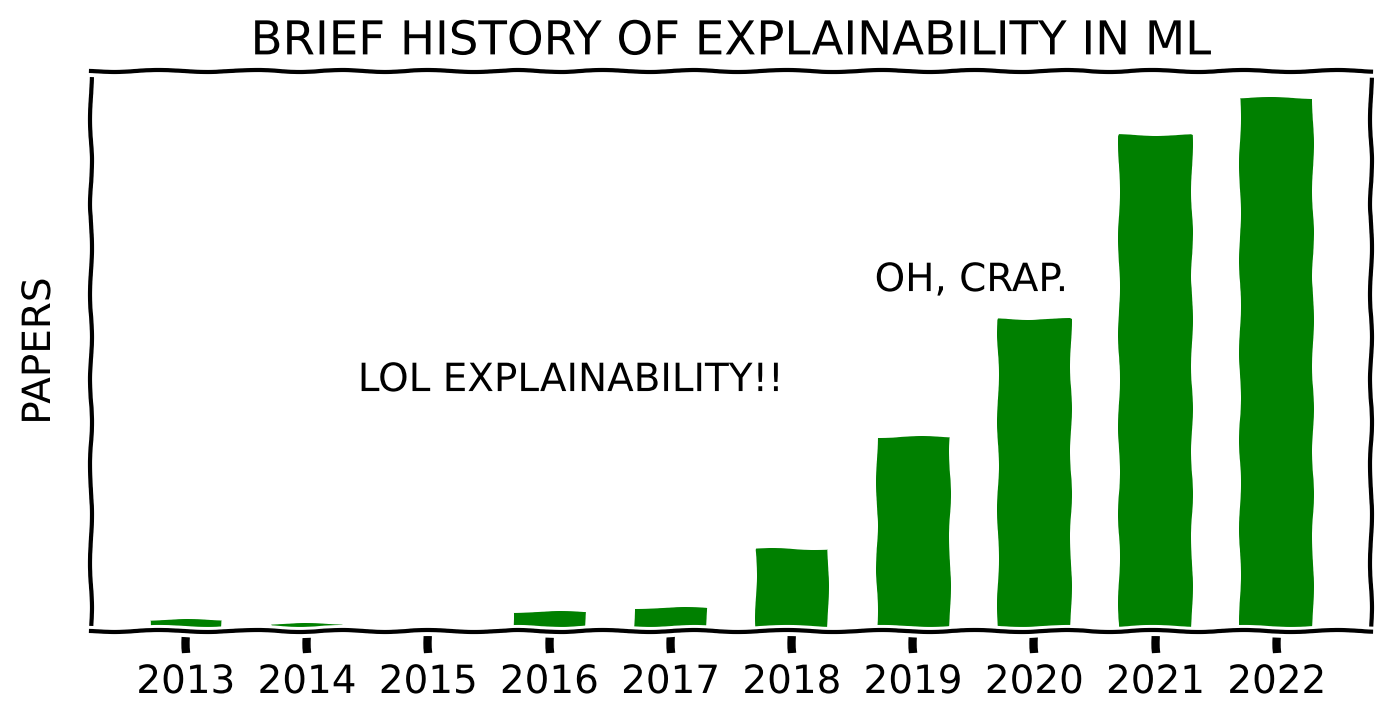
Expert Systems (1970s & 1980s)
Transparent Machine Learning Models
Rise of the Dark Side (Deep Neural Networks)
- No need to engineer features (by hand)
- High predictive power
- Black-box modelling
DARPA’s XAI Concept

Why We Need Explainability
Expectations Mismatch
We tend to request explanations mostly when a phenomenon disagrees with our expectations.
For example, an ML model behaves unlike we envisaged and outputs an unexpected prediction.
Stakeholders

Purpose or Role
- Fairness
- Privacy
- Reliability and Robustness
- Causality
- Trust
Trustworthiness / Reliability / Robustness / Causality
No silly mistakes & socially acceptable
Fairness
Does not discriminate & is not biased
Benefits
New knowledge
Aids in scientific discovery
Legislation
Does not break the law
- EU’s General Data Protection Regulation
- California Consumer Privacy Act
Debugging / Auditing
Identify modelling errors and mistakes
Human–AI co-operation
Help humans complete tasks
Drawbacks
Safety / Security
Abuse transparency to steal a (proprietary) model
Manipulation
Use transparency to game a system, e.g., credit scoring
Pitfalls
Copy machine study done by Langer, Blank, and Chanowitz (1978):

Explanation Types
Explainability Source
- ante-hoc – intrinsically transparent predictive models (transparency by design)
- post-hoc – derived from a pre-existing predictive models that may themselves be unintelligible (usually requires an additional explanatory modelling step)
Explanation Provenance
Ante-hoc does not necessarily entail explainable or human-understandable
- endogenous explanation – based on human-comprehensible concepts operated on by a transparent model
- exogenous explanation – based on human-comprehensible concepts constructed outside of the predictive model (by the additional modelling step)
Explanation Domain
Original domain
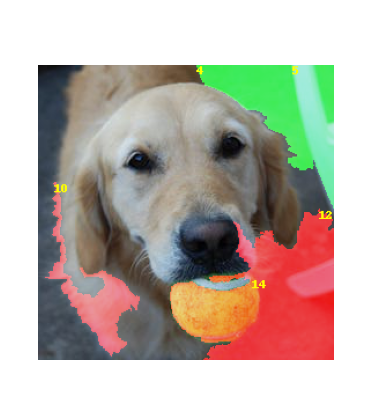
Transformed domain
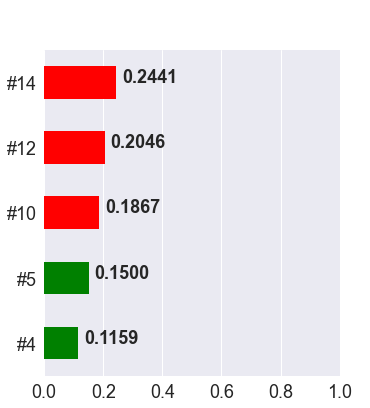
Explanation Types
- model-based – derived from model internals
- feature-based – regarding importance or influence of data features
- instance-based – carried by rael or fictitious data point
- meta-explainers – one of the above, but not extracted directly from the predictive model being explained (using an additional explainability modelling step, e.g., surrogate)
Explanation Family
- associations between antecedent and consequent
- feature importance
- feature attribution / influence
- rules
- exemplars (prototypes & criticisms)
Explanation Family
contrasts and differences
- (non-causal) counterfactuals
i.e., contrastive statements - prototypes & criticisms
- (non-causal) counterfactuals
Explanation Family
causal mechanisms
- causal counterfactuals
- causal chains
- full causal model
Explanatory Medium
- (statistical / numerical) summarisation
- visualisation
- textualisation
- formal argumentation
Communication of Explanations
Static artefact
Interactive (explanatory) protocol
interactive interface- interactive explanation
Explainability Scope
| global | cohort | local | |
|---|---|---|---|
| data | a set of data | a subset of data | an instance |
| model | model space | model subspace | a point in model space |
| prediction | a set of predictions | a subset of predictions | a individual prediction |
- algorithmic explanation – the learning algorithm, not the resulting model; e.g., modelling assumptions, caveats, compatible data types, etc.
Explainability Target
Focused on a single class (technically limited)
implicit context
Why \(A\)? (…and not anything else, i.e., \(B \cup C \cup \ldots\))
explicit context
Why \(A\) and not \(B\)?
Multi-class explainability (Sokol and Flach 2020b)
If 🌧️, then \(A\); else if ☀️ & 🥶, then \(B\), else ☀️ & 🥵, then \(C\).
Important Developments
Where Is the Human? (circa 2017)

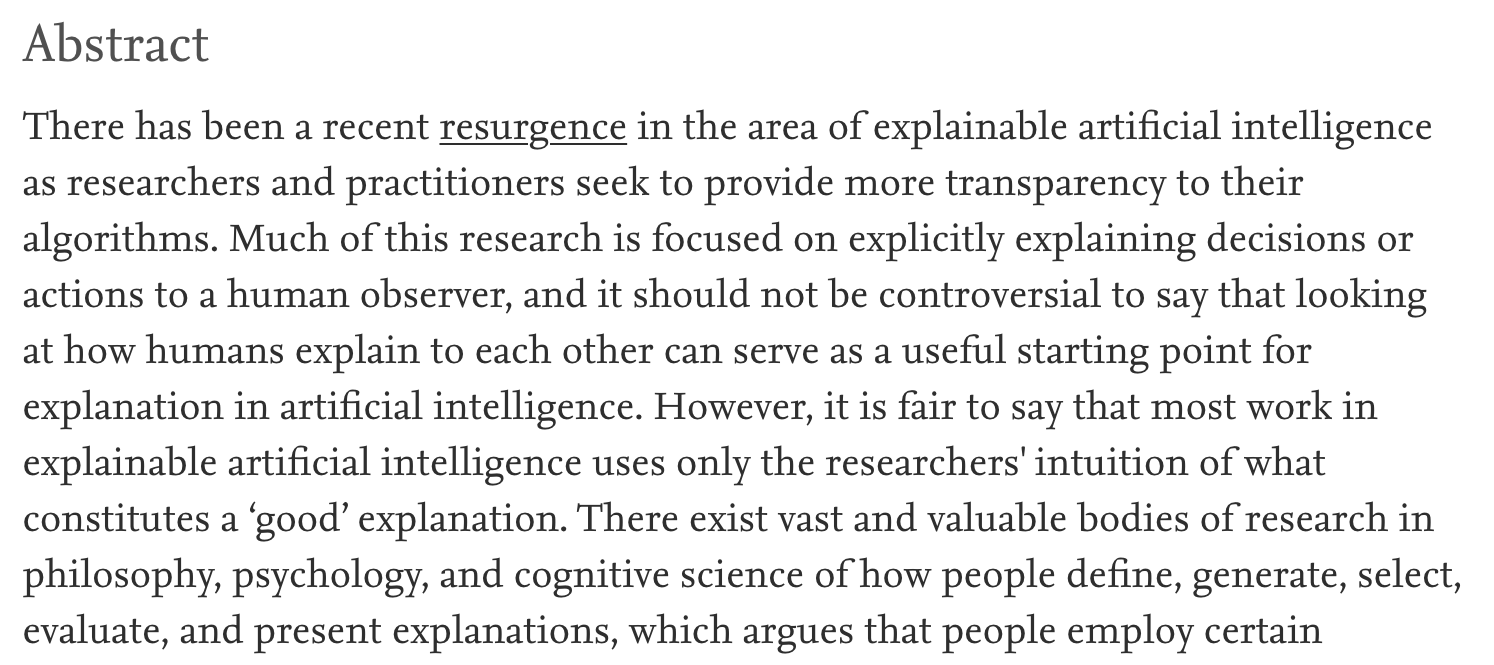
Humans and Explanations
- Human-centred perspective on explainability
- Infusion of explainability insights from social sciences
- Interactive dialogue (bi-directional explanatory process)
- Contrastive statements (e.g., counterfactual explanations)
Exploding Complexity (2019)

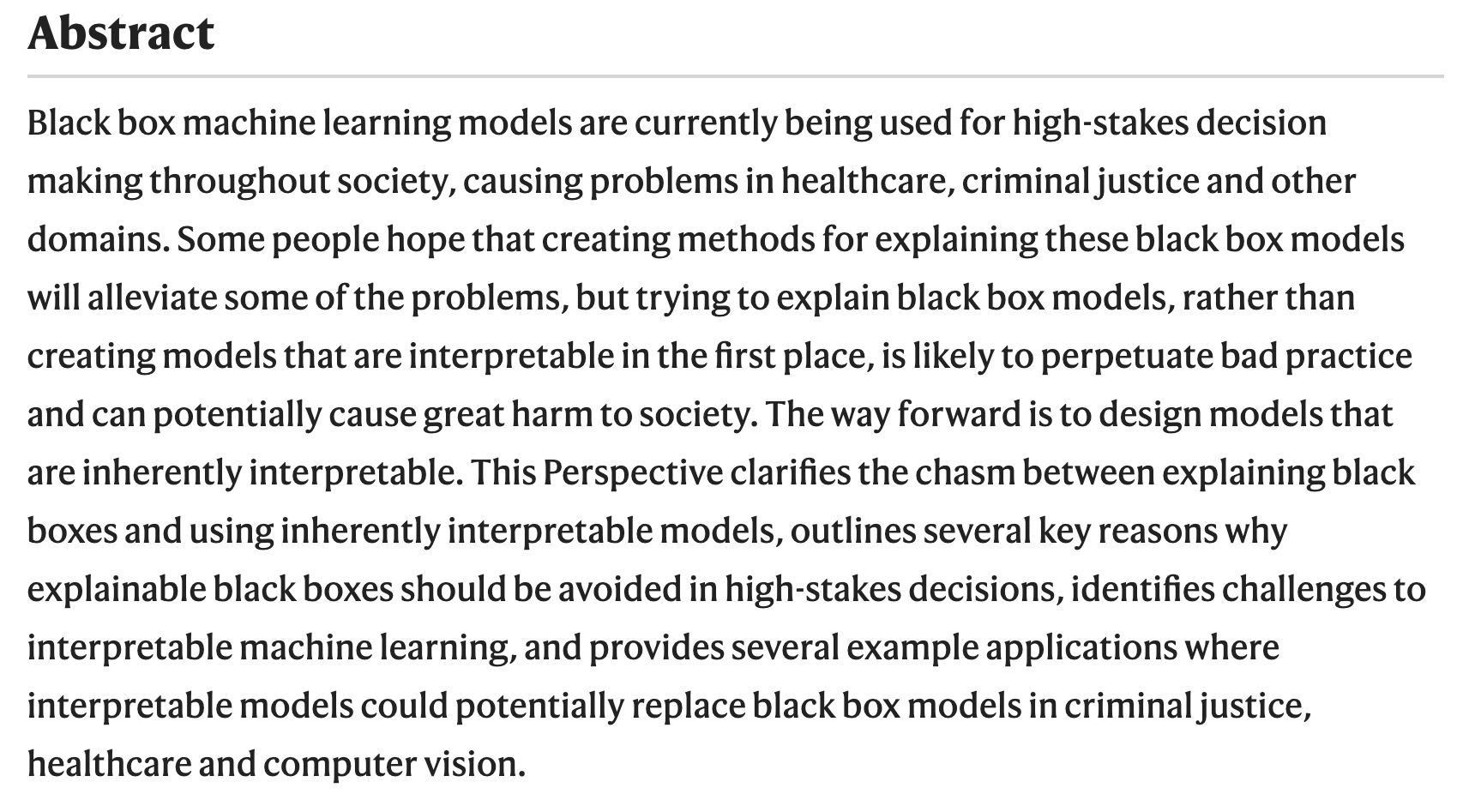
Ante-hoc vs. Post-hoc
Black Box + Post-hoc Explainer
- Chose a well-performing black-box model
- Use explainer that is
- post-hoc (can be retrofitted into pre-existing predictors)
- and possibly model-agnostic (works with any black box)

Caveat: The No Free Lunch Theorem

Post-hoc explainers have poor fidelity
- Explainability needs a process similar to KDD, CRISP-DM or BigData
![Data process]()
- Focus on engineering informative features and inherently transparent models
It requires effort
XAI process
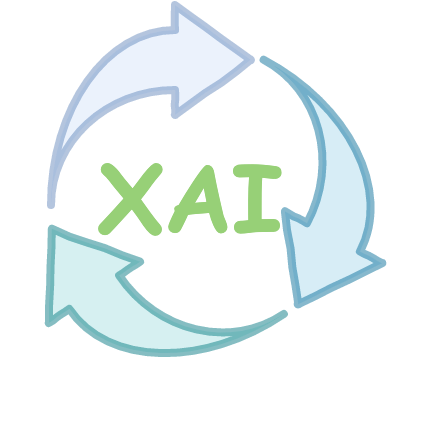 A generic eXplainable Artificial Intelligence process is beyond our reach at the moment
A generic eXplainable Artificial Intelligence process is beyond our reach at the moment
XAI Taxonomy spanning social and technical desiderata:
• Functional • Operational • Usability • Safety • Validation •
(Sokol and Flach, 2020. Explainability Fact Sheets: A Framework for Systematic Assessment of Explainable Approaches)Framework for black-box explainers
(Henin and Le Métayer, 2019. Towards a generic framework for black-box explanations of algorithmic decision systems)
![XAI process]()
Examples of Explanations
Permutation Feature Importance

Individual Conditional Expectation & Partial Dependence
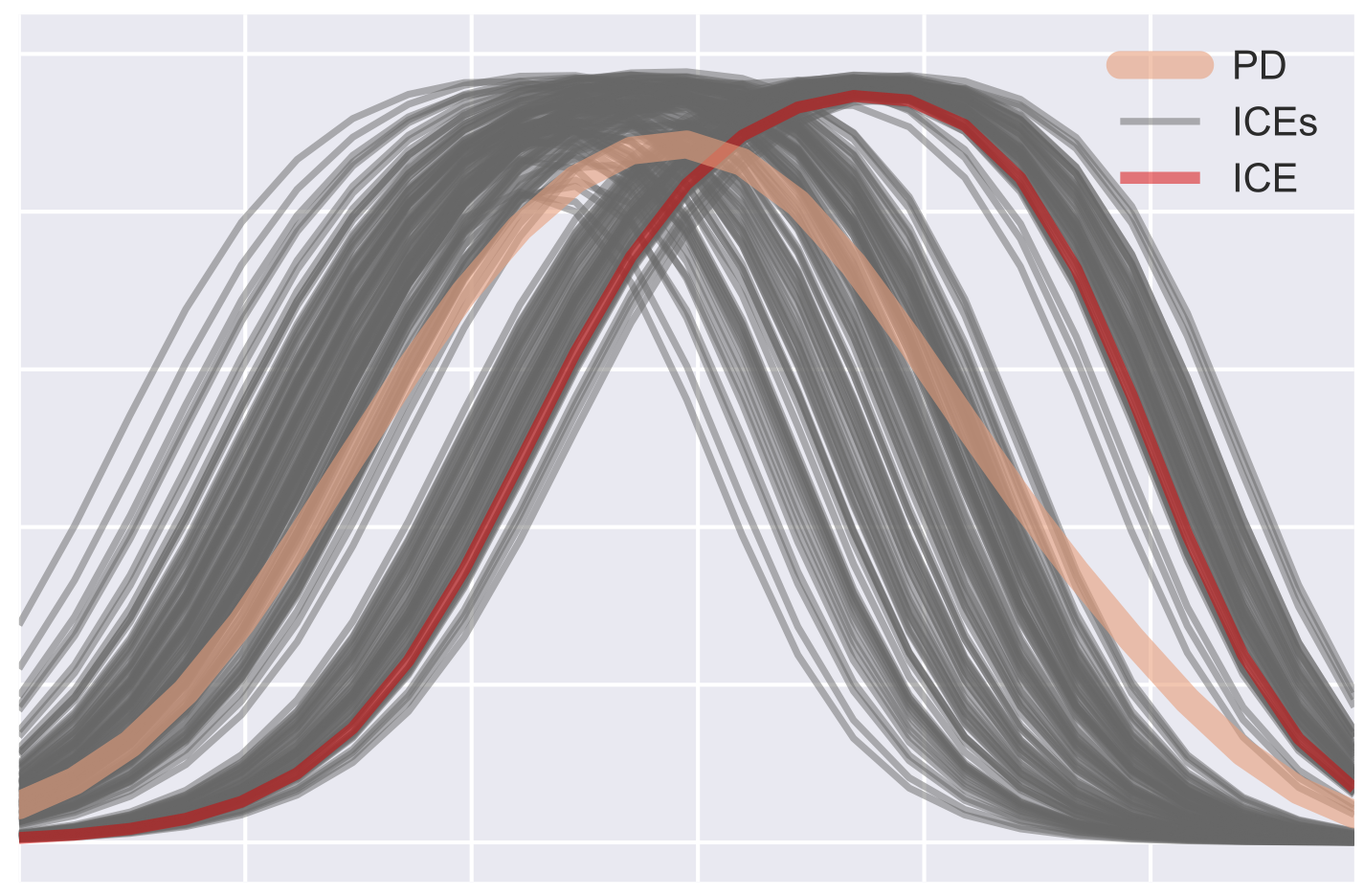
FACE Counterfactuals

RuleFit

Useful Resources
📖 Books
- Survey of machine learning interpretability in form of an online book
- Overview of explanatory model analysis published as an online book
📝 Papers
- General introduction to interpretability (Sokol and Flach 2021)
- Introduction to human-centred explainability (Miller 2019)
- Critique of post-hoc explainability (Rudin 2019)
- Survey of interpretability techniques (Guidotti et al. 2018)
- Taxonomy of explainability approaches (Sokol and Flach 2020a)
💽 Software
Wrap Up
Summary
- The landscape of explainability is fast-paced and complex
- Don’t expect universal solution
- The involvement of humans – as explainees – makes it all the more complicated
Bibliography
Questions

